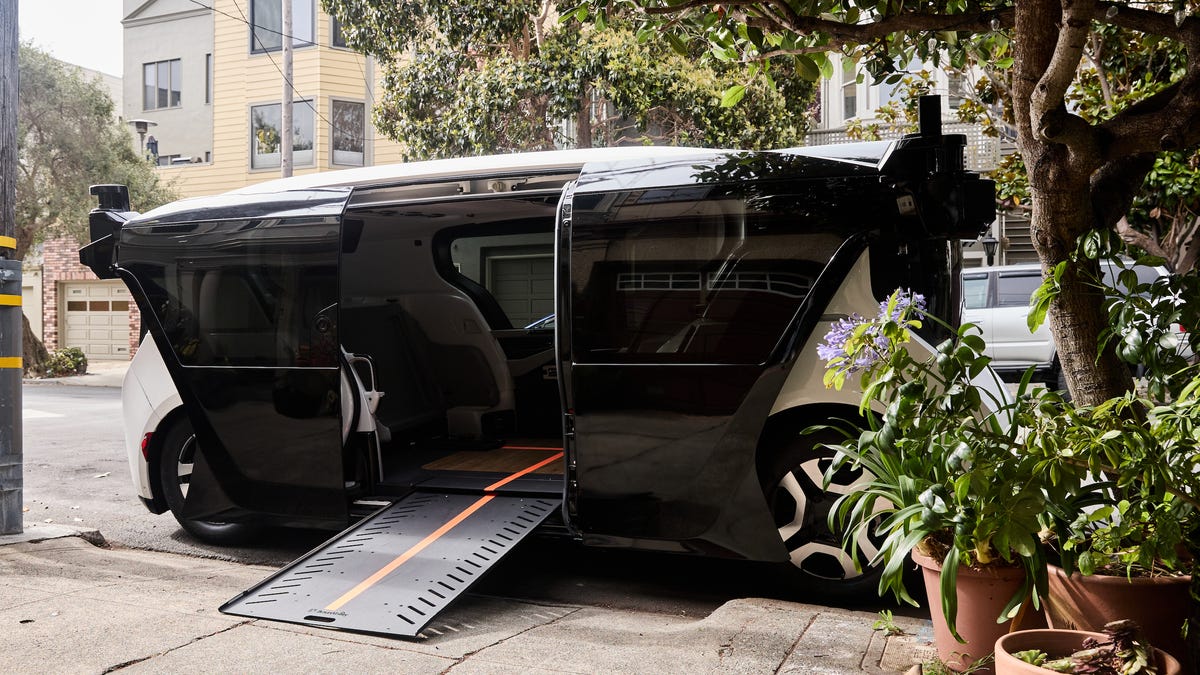Cruise Unveils a Wheelchair-Accessible Self-Driving Car
The goal is for the vehicle to hit the streets next year.

Cruise's wheelchair-accessible vehicles are slated to roll out next year.
Cruise, the autonomous-car company owned by General Motors, has unveiled a wheelchair-accessible self-driving car called Wav. A fully built and operational prototype was showcased at an event in San Francisco on Wednesday. Cruise aims to launch the vehicle next year, starting with a pilot program for a handful of users.
The goal of Wav (pronounced "wave") is to provide more accessible transportation options for people with disabilities. Around 42 million Americans have a disability, according to US Census Bureau data from 2021.
"Accessibility is also an important reason why we're invested in autonomous vehicles," Carrie Morton, GM's chief engineer of accessibility, said during a panel discussion. "This transformation in mobility has the potential to really change the way people move around the world."
The car features a ramp and wheelchair securement system, and room inside for one wheelchair user and one companion.
Cruise says it worked closely with the disability community in developing Wav, gathering feedback on design, user experience and securement systems. It collaborated with manufacturers of accessible vehicles and products, like BraunAbility and Q'Straint.
"People with disabilities are living in a world that is not designed and built for us," said Theo Braddy, executive director of the National Council on Independent Living. "We also know that this can be changed today."
Making transportation more accessible can lead to improved quality of life in regard to work, education, health and recreational activities, Braddy noted.
Wav will need regulatory approval before hitting public roads, and Cruise will make changes to the prototype based on user feedback. Closed-course testing of Wav begins next month.
The news comes at a time when driverless cars are being met with a mix of fascination and skepticism -- to put it lightly -- by local communities.
Last month, the California Department of Motor Vehicles told Cruise to reduce its fleet of active robotaxis in San Fransisco by 50% following a collision between a Cruise car and a fire truck. The DMV can suspend or revoke testing or deployment permits if it finds there's an "unreasonable risk to public safety."
In response, Cruise said it's working with the DMV to "make any improvements and provide any data they need to reinforce the safety and efficiency of our fleet." Just a couple of weeks before, California regulators gave Cruise and competitor Waymo permission to charge for rides throughout San Francisco at any time of day.

